| CPC C07K 7/56 (2013.01) [A61K 49/0032 (2013.01); A61K 49/0043 (2013.01); A61K 49/0056 (2013.01); A61K 51/088 (2013.01); C07K 7/08 (2013.01); C07K 14/001 (2013.01)] | 22 Claims |
|
1. A compound of formula I which selectively binding to Eph receptor tyrosine kinase A2 (EphA2):
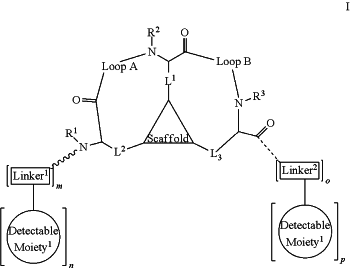 or a pharmaceutically acceptable salt thereof, wherein:
each of L1, L2, and L3 is independently a covalent bond or a C1-8 bivalent hydrocarbon chain wherein one, two or three methylene units of the chain are optionally and independently replaced by —S—, —N(R)—, —O—, —C(O)—, —OC(O)—, —C(O)O—, —C(O)N(R)—, —N(R)C(O)—, —S(O)—, —S(O)2— or —N(R)CH2C(O)—;
each of R is independently hydrogen or C1-4 alkyl;
each of m, n, o, and p is independently 0 or 1, wherein at least one of n and p is 1;
each of q and r is independently 1, 2, 3, 4, 5, 6, 7, 8, 9, 10, 11, 12, 13, 14 or 15;
R1 is R or —C(O)R;
each of R4 and R6 is independently hydrogen or an optionally substituted group selected from C1-6 aliphatic, a 3-8 membered saturated or partially unsaturated monocyclic carbocyclic ring, phenyl, an 8-10 membered bicyclic aromatic carbocyclic ring, a 4-8 membered saturated or partially unsaturated monocyclic heterocyclic ring having 1-2 heteroatoms independently selected from nitrogen, oxygen, or sulfur, a 5-6 membered monocyclic heteroaromatic ring having 1-4 heteroatoms independently selected from nitrogen, oxygen, or sulfur, or an 8-10 membered bicyclic heteroaromatic ring having 1-5 heteroatoms independently selected from nitrogen, oxygen, or sulfur;
each of R4′ and R6′ is independently hydrogen or methyl;
each of R2, R3, R5, and R7 is independently hydrogen, or C1-4 aliphatic, or:
an R5 group and its adjacent R4 group are optionally taken together with their intervening atoms to form a 4-8 membered saturated or partially unsaturated monocyclic heterocyclic ring having 1-2 heteroatoms independently selected from nitrogen, oxygen, or sulfur; or
an R7 group and its adjacent R6 group are optionally taken together with their intervening atoms to form a 4-8 membered saturated or partially unsaturated monocyclic heterocyclic ring having 1-2 heteroatoms independently selected from nitrogen, oxygen, or sulfur;
Scaffold is a trivalent group that connects and orients a cyclic peptide;
Loop A is
 and Loop B is
 or
Loop A is
 and Loop B is
 or
Loop A is
 and Loop B is
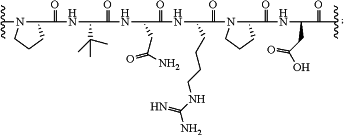 or
Loop A is
 and Loop B is
 or
Loop A is
 and Loop B is
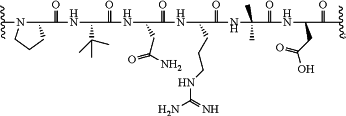 or
Loop A is
 and Loop B is
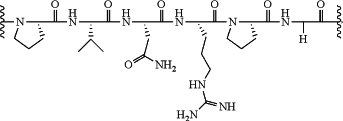  indicates the site of attachment to the N-terminus of the Bicycle; indicates the site of attachment to the N-terminus of the Bicycle; indicates the site of attachment to the C-terminus of the Bicycle; indicates the site of attachment to the C-terminus of the Bicycle;Detectable Moiety1 is any moiety capable of being detected;
Detectable Moiety2 is any moiety capable of being detected;
Linker1 is hydrogen, —C(O)R,
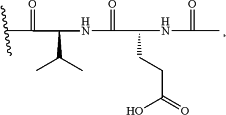 or a bivalent moiety that connects the N-terminus of the Bicycle with Detectable Moiety1, wherein when n is 0, Linker1 is hydrogen, —C(O)R, or
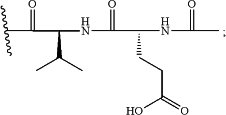 Linker2 is —NH2 or a bivalent moiety that connects the C-terminus of the Bicycle with Detectable Moiety2, wherein when p is 0, Linker2 is —NH2.
|